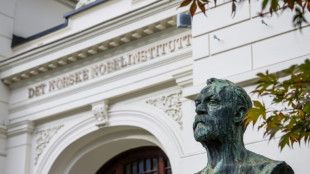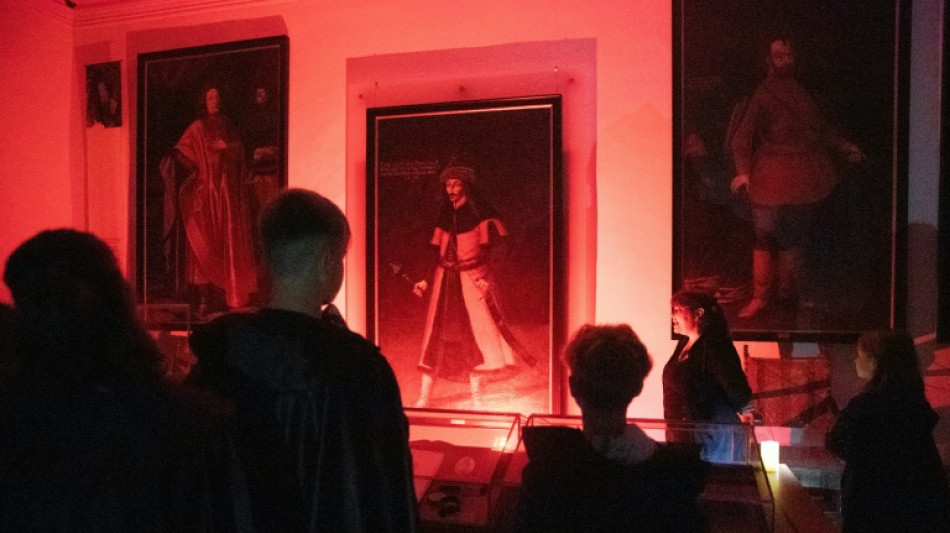
-
 Battling cancer made Vendee Globe win 'more complicated', says skipper Dalin
Battling cancer made Vendee Globe win 'more complicated', says skipper Dalin
-
England, Portugal, Norway closing in on 2026 World Cup

-
 Child protection vs privacy: decision time for EU
Child protection vs privacy: decision time for EU
-
Bear injures two in Japan supermarket, man killed in separate attack

-
 In Simandou mountains, Guinea prepares to cash in on iron ore
In Simandou mountains, Guinea prepares to cash in on iron ore
-
Morikawa says not to blame for 'rude' Ryder Cup fans

-
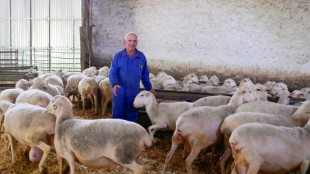 Far right harvests votes as climate rules roil rural Spain
Far right harvests votes as climate rules roil rural Spain
-
'Return to elegance': highlights from Paris Fashion Week

-
 Britain's storied Conservative party faces uncertain future
Britain's storied Conservative party faces uncertain future
-
New Zealand's seas warming faster than global average: report

-
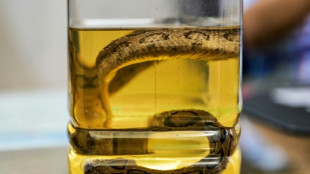 Snakebite surge as Bangladesh hit by record rains
Snakebite surge as Bangladesh hit by record rains
-
Yankees deny Blue Jays playoff sweep as Mariners beat Tigers

-
 Australia police foil 'kill team' gang hit near daycare centre
Australia police foil 'kill team' gang hit near daycare centre
-
US, Qatar, Turkey to join third day of Gaza peace talks in Egypt

-
 Gold tops $4,000 for first time as traders pile into safe haven
Gold tops $4,000 for first time as traders pile into safe haven
-
Indian garment exporters reel under US tariffs
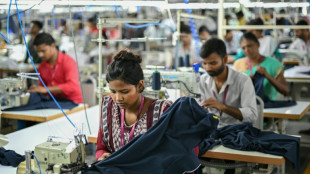
-
 NBA back in China after six-year absence sparked by democracy tweet
NBA back in China after six-year absence sparked by democracy tweet
-
Energy storage and new materials eyed for chemistry Nobel
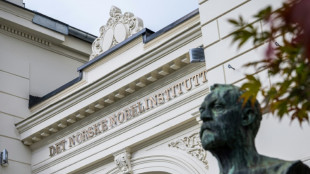
-
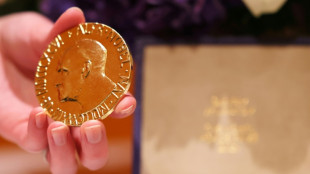 Trump unlikely to win Nobel Peace Prize, but who will?
Trump unlikely to win Nobel Peace Prize, but who will?
-
Qatar, Turkey to join third day of Gaza peace talks in Egypt

-
 Study finds women have higher genetic risk of depression
Study finds women have higher genetic risk of depression
-
Dolly Parton's sister calls for fan prayers over health issues

-
 On Trump's orders, 200 troops from Texas arrive in Illinois
On Trump's orders, 200 troops from Texas arrive in Illinois
-
Two bodies found, two missing after Madrid building collapse
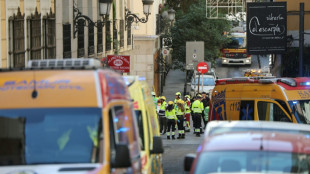
-
 Panthers raise banner as NHL three-peat bid opens with win
Panthers raise banner as NHL three-peat bid opens with win
-
Nobel physics laureate says Trump cuts will 'cripple' US research
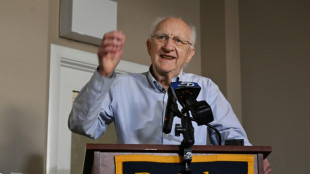
-
 UFC star McGregor suspended 18 months over missed drug tests
UFC star McGregor suspended 18 months over missed drug tests
-
Trump talks up Canada trade deal chances with 'world-class' Carney
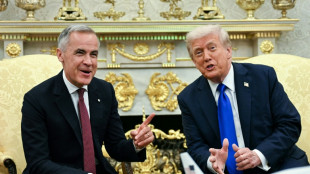
-
 Ecuador president unharmed after apparent gun attack on motorcade
Ecuador president unharmed after apparent gun attack on motorcade
-
Lyon exact revenge on Arsenal, Barca thrash Bayern in women's Champions League

-
 Trump says 'real chance' to end Gaza war as Israel marks attacks anniversary
Trump says 'real chance' to end Gaza war as Israel marks attacks anniversary
-
Gerrard brands failed England generation 'egotistical losers'

-
 NFL fines Cowboys owner Jones $250,000 over gesture to fans
NFL fines Cowboys owner Jones $250,000 over gesture to fans
-
Bengals sign veteran quarterback Flacco after Burrow injury

-
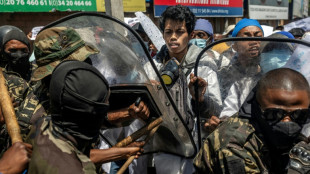 New prime minister inspires little hope in protest-hit Madagascar
New prime minister inspires little hope in protest-hit Madagascar
-
Is Trump planning something big against Venezuela's Maduro?

-
 EU wants to crack down on 'conversion therapy'
EU wants to crack down on 'conversion therapy'
-
French sex offender Pelicot says man who abused ex-wife knew she was asleep

-
 Trump says 'real chance' to end Gaza war as Israel marks Oct 7 anniversary
Trump says 'real chance' to end Gaza war as Israel marks Oct 7 anniversary
-
UK prosecutors to appeal dropped 'terrorism' case against Kneecap rapper

-
 Spain, Inter Miami star Alba retiring at end of season
Spain, Inter Miami star Alba retiring at end of season
-
EU targets foreign steel to rescue struggling sector

-
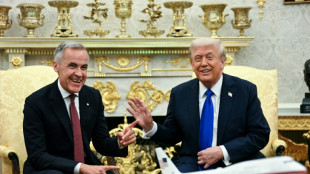 Trump talks up Canada deal chances with visiting PM
Trump talks up Canada deal chances with visiting PM
-
Knight rides her luck as England survive Bangladesh scare

-
 Pro-Gaza protests flare in UK on anniversary of Hamas attack
Pro-Gaza protests flare in UK on anniversary of Hamas attack
-
Top rugby unions warn players against joining rebel R360 competition

-
 Outcast Willis 'not overthinking' England absence despite Top 14 clean sweep
Outcast Willis 'not overthinking' England absence despite Top 14 clean sweep
-
Trump says 'real chance' of Gaza peace deal
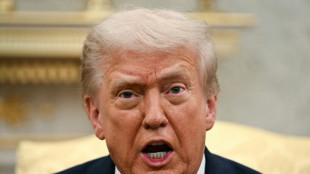
-
 Macron urged to quit to end France political crisis
Macron urged to quit to end France political crisis
-
No.1 Scheffler seeks three-peat at World Challenge


Vlad the Impaler steps out of Dracula's shadow
Cloaked in a black cape like the infamous count himself, 10-year-old Niklas Schuetz runs through the dark corridors of a hill-top castle in search of the truth about Dracula.
"He was a Romanian prince, not a vampire," said the schoolboy, as he tripped by torchlight through the nocturnal gloom of Forchtenstein Castle.
The group being guided through the Austrian fortress are eager to sink their teeth into the gripping life of Vlad Tepes, the notorious "Vlad the Impaler", whose descendants once held the schloss.
The castle is home to one of the few paintings of the cruel 15th-century prince, and this Halloween its curators are trying to bring the real historical figure out from the chilling shadow of the monster invented by the Irish writer Bram Stoker.
Rather than being a ghoulish fiend, the real Vlad Tepes had for a "long time gone down in history as a positive figure" who courageously fought the Ottoman Turks, said the director of its collections, Florian Bayer.
"More and more people are able to distinguish between the bloodsucking vampire and the historical figure," he said.
Voivode Vlad III -- also known by his patronymic name Dracula derived from the Slavonic word for dragon -- once ruled over Wallachia, a Romanian-speaking vassal state of the Kingdom of Hungary.
- 'Forest' of the impaled -
Held as a child hostage of the sultan at the Ottoman court, he later turned against his former captors.
In several hard-fought campaigns against the Turks, he struck fear into his enemies by impaling thousands of Turkish prisoners.
This gruesomely slow death was also used against his internal rivals, like "the German merchants from neighbouring Transylvanian towns," historian Dan Ioan Muresan told AFP.
Tepes was often depicted amidst a "forest" of impaled bodies.
Yet despite his gory reputation, Vlad was a handsome devil and something of a ladykiller, according to Muresan.
He was a "very handsome man with an imposing build", with long hair flowing over his Turkish-style kaftans adorned with diamonds.
By marrying a cousin of the Hungarian king, he "gave rise to a branch from which the British royal family descends," the historian added.
Indeed Britain's King Charles III has repeatedly boasted of their shared blood ties, saying that Transylvania runs through his veins.
- Communist marketing -
The gothic novel by Stoker published in 1897 helped kickstart the modern vampire genre.
Dozens of films later, the fictional Dracula had transformed into a pop culture icon.
"Until the 1960s, Romanians didn't associate the character imagined by Stoker with Vlad Tepes," said Bogdan Popovici, head of the national archives in the Transylvanian city of Brasov, home to some of the prince's manuscripts.
"It was the Communists who started to commercialise it for the Western market to attract tourists," he said.
While cashing in on selling the vampire myth to visitors, the regime of Romanian Communist dictator Nicolae Ceausescu sought to resurrect Vlad as a national hero.
Paradoxically, the Communist regime was careful in differentiating the real Dracula from its fictitious counterpart as it pursued its mission to wipe out pagan traditions.
- Tears of blood -
"Romanians have never recognised themselves in the character, which was born out of a foreign imagination and planted into an exotic reality," said Muresan.
"It is being exploited as a kind of tourist trap," he said.
The real Vlad never set foot in Romania's Bran Castle -- widely taken as the inspiration for the lair of Dracula -- but it hasn't stopped it drawing visitors in their droves.
Murdered by his own people in 1476 in the wake of a conspiracy, experts dispute the whereabouts of his remains to this day, with some claiming that his head was sent to the sultan in Constantinople to confirm his death.
A recent Italian scientific study based on the analysis of the prince's handwritten letters found that Vlad probably suffered from haemolacria, indicating that he could shed tears of blood.
The creepy detail is undoubtedly enough to keep the Dracula myth alive for some time yet.
T.Egger--VB

